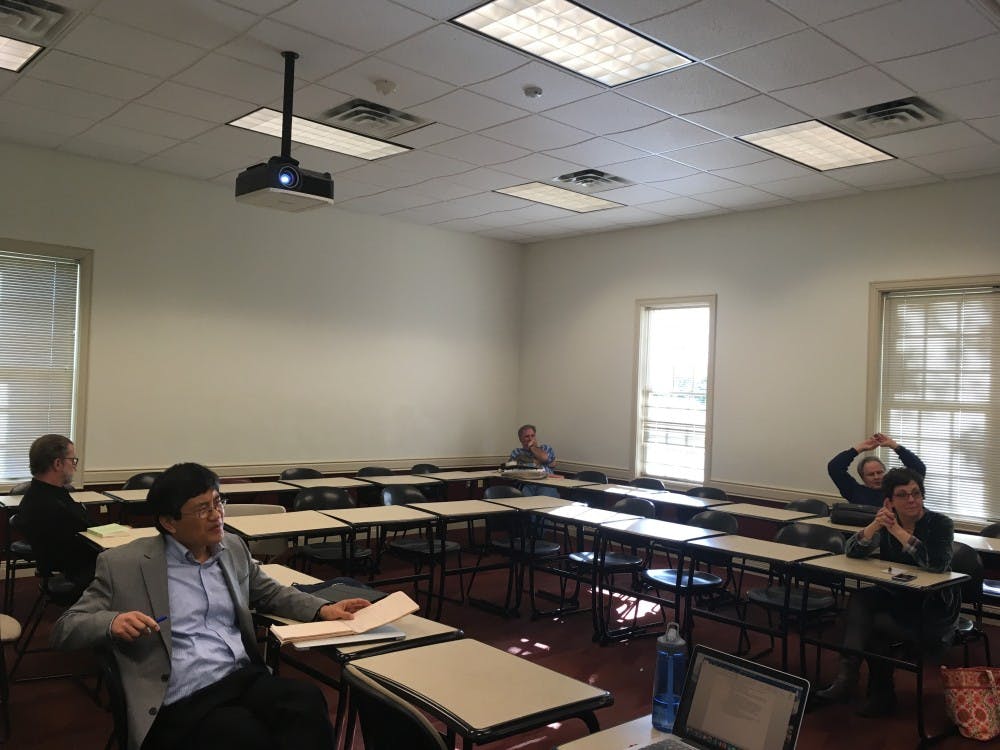University of Maryland Professor Sarah Oates took her political expertise and dug deep into the subjects of media and politics on her latest research, which she presented at Elon University on October 10.

Though there were merely six in attendance — only one of which was an Elon student — Oates made use of her small audience to deliver a succinct summary of her research and facilitate discussion afterwards.
“Maybe students have reached their saturation point in this election,” Oates said when noting the meager turnout.
Her presentation, titled, “Donald Trump and the ‘Oxygen of Publicity': Branding, Social Media and Mass Media in the 2016 Presidential Primary Elections,” was co-authored with Wendy W. Moe, professor of marketing and academic director at the University of Maryland, and went into an in-depth analysis of the branding of candidates, the integration of social media as a source of information and how organizations covered candidates — specifically Trump.
Oates, who has a Ph.D. in political science, has done extensive work on Russian elections. But prior to embarking on her academic career, she was a journalist for nine years with pieces featured in the Orlando Sentinel and New York Times.

“I naïvely and foolishly thought this would be a good election to study,” Oates said, explaining her reasoning for picking this election season in the United States as a focus. “I always viewed Russian and American politics quite differently, thinking of Russian politics as ‘this candidate tearing down another.’ Then I woke up one morning and realized Russia had arrived in the United States.”
Using media analytics tools such as Brandwatch, Oates and Moe found that media analytics tools didn’t fully represent what they were hoping to research. Oates said that in one instance, she wanted to grab evidence of negative sentiment toward Trump, but when the tracking tool gathered a group of tweets, Oates didn’t believe the sources were coded to correctly support the negative claim.
While there were various types of social media Oates and Moe wanted to study, they mainly worked with Twitter due to the fact that more people are viewed as “public” on the source, and found that they could get more data this way.
In the end, they compared traditional media to public response on social media, and found that Trump dominated conversation on virtually all platforms.
“It’s all Trump, all the time,” Oates said. “I even kept seeing in traditional media, like the New York Times, articles saying that Trump is a candidate who offends people again and again — but the coverage is huge. They say the coverage is negative, so perhaps people would steer away from him, but I believe it had the opposite effect.”
During the discussion period, Joel Shelton, assistant professor of political science, led a segment on his take on the research.
“In the model, [Oates and Moe] weren’t looking at social media and traditional media as a zero-sum proposition,” Shelton said. “It’s a media manufacturing of events and part of it’s traditional, part of it’s social. All we do today is talk about how important social media is, but it seems like at the heart of the resonance machine is traditional media … what is making one thing stick and not the other?”
Oates took to this question and talked about how journalists play a role.
“Journalists say things to shine light on Trump, as they think they’re ‘outing’ him by writing all his ridiculous sayings, but it didn’t work,” she said, noting she found that Trump got 10 times the coverage.
This led to Oates to beg the question of what makes a professional journalist, something she and her colleagues at the Philip Merrill College of Journalism at Maryland discuss with their students at length.
“You are bounded by the ethics of your media organization,” she said. “The problems — as I saw in my research — are immense.”
In the end, Oates said that she continues to see more and more people wanting to be journalists, and that — she claimed — is heartening.


